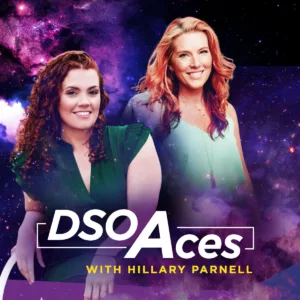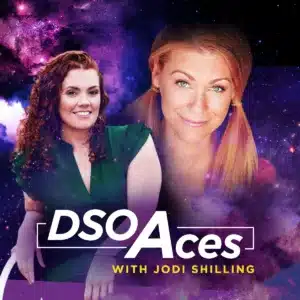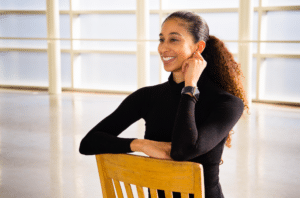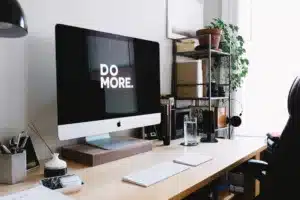Dance classes for preschool-aged children when done properly, are the bread and butter of your dance studio. These classes are hands-down the easiest to target when it comes to marketing, as well as the students and parents who will bring you the most referrals. The simple fact is, young children love music and movement – they are the backbone of our most popular children’s TV programs, our most shared YouTube videos, and a staple in early childhood education.
Easy money for dance studios, right? Well, not quite.
While there is a huge and targetable market for children’s dance classes, there is also a significant dropout rate. Plus, keeping a class of 2-6 year olds engaged and cooperative can be hard work! If you’re looking for ways to spice up your preschool program and keep those tots coming back for more every week, then these tips are for you!
Music
Well, duh. Obviously we need music for a preschool dance class – but the key here is choosing music that your students will recognise, remember, and associate with their dance moves. Routine and repetition in classes for this younger age group is super important in progression, so choose a couple of bouncy ‘leap’ songs, your smooth ‘stretching’ songs and your whimsical ‘twirling’ tracks to have on rotation every few weeks. You don’t want the same playlist each and every week – that gets a bit boring – but at the same time you don’t want to change everything every time the kids come to class. A couple of different songs each lesson is a great way to keep their interest and also see them progress, which is immeasurably rewarding for the children and their parents alike.
It also pays to have a grasp on what children in this age group are loving and connecting with currently. If you can sneak in a remixed theme to their favourite TV show, or a song that has just taken over YouTube Kids each week you’ll see those little faces light up with a whole new appreciation of you ‘speaking their language’. Having your own children in the age group is a huge help in this. If not, ask around in parenting forums, ask the kids themselves, or do some research. You’ll need to dig a bit deeper than downloading the Frozen score in order to stand out, but guaranteed if you can spend 5 minutes teaching a funky hospital combination to the Doc McStuffins soundtrack you’ll have those dancers begging for more!
Don’t forget to use spotify playlists, which will be your best friend in quickly and efficiently building the perfect repertoire for your lucky class.
Planning
Class planning is of course important no matter what age you are teaching, but having a plan – down to the minute – for your preschool classes is make-or-break stuff. Your studio’s program needs to be set from the moment they enter the room to the moment they leave. Warm ups, stretching, games, corner work, technique, combinations, and choreography needs to be organized in advance with your music set and timed to perfection. Nothing diverts a pre-schooler’s attention quite like their teacher running over to the stereo, pressing pause, losing where they were in the song, scrolling through the playlist and absently giving instructions while they work out what to play next. Pre-set your playlist with a song for each exercise. Rehearse what you will need to say between exercises, and insert some softer, transitioning music to play as you talk (there are apps or freelance music editors galore to make this a super easy process). Silence in a preschool class gets a big thumbs down, so have your playlist sorted, rehearsed and ready to go.
Having a fully charged iPod almost goes without saying, but you’d be surprised by how many teachers struggle with this simple preparation! Also be sure to have your class planning saved and systemized for you to refer to and use for training other staff members. Always have plenty of stamps or stickers for the end of class, and make it a priority to learn the names of your students and parents. Nametags are a great idea if the class is large, especially if you get creative with your colours and images.
Props
Props for preschoolers are a dance teacher’s best friend! Not only are props fun to use and a key to keeping your dancers engaged, but they also keep your class ordered, creative and once again help the students with progression. Think about lining up your children to do kicks across the room. They need to go one-at-a-time to get that individual attention, but after about 3 turns your waiting kids are bored and unmotivated. Now put a scarf in their hands to hold as they wait. Suddenly there is a small, tactile focus and a ritual around waiting patiently with their scarf. Who can hold their scarf the stillest while waiting? Who can scrunch it into the tiniest ball and hide it in their fist until their turn?
Similarly, using props like spots or feet on the ground for them to stand on is magic in keeping them calm and organized. Asking them to return to their spots is like hitting ‘refresh’. Who can walk to their spot the slowest? The quietest? The lowest, or highest? Maybe they are being monkeys or crocodiles. Even something as simple as moving spaces can be rife with possibilities for creative expression.
For a great range of props to keep and rotate over the weeks, you probably need about a dozen variations to bring in for your exercises. Some favorites include:
- Magic wands
- Ribbons on sticks
- Musical instruments
- Costumes
- Flowers
- Bubbles
- Pom poms
- Teddy bears
- Parachutes
- Balls
- Scarves
- Hats
The right teacher
This is the big one, because teaching a preschool dance class well is not an easy task. You may have one of the most experienced ballet teachers around on your staff with more qualifications than you can poke a stick at, but this may not necessarily make them right for your youngest dancers.
The main thing you need from your preschool teacher is energy. On their worst day, they still need to bounce through those studio doors and engage with the class every second. They are not only teaching the children, but also entertaining them and maintaining control over the class. When your numbers build, assistant teachers are an invaluable asset to help keep the children in their places, handing out props and assisting with corrections.
Your teacher also needs to be aware of everything that is going on. 4yr olds love to push boundaries, and for their safety and enjoyment you need to develop an ‘eyes in the back of your head’ sense. Know how many children are in front and behind you, and constantly scan your students to catch any poking or hair-pulling (which is a huge warning sign that they aren’t engaged in the class, just quietly) that may be going on. And of course, checking and correcting their technique.
Each child needs to feel like the star of the class every week, so it’s important to catch them doing the right thing and reward them for it in front of their peers. And patience. If your teacher isn’t patient with this age group, then you need to find someone who is!
Experiences
When it comes to attracting and retaining your preschool students, the experience you create within the studio is just as important as the dance training. You want them and their families to remember how they felt when they arrived for their very first class and received a small “welcome” gift box wrapped with ribbon and a handwritten note, with a tiny plush teddy bear wearing a tutu for them to keep forever. There are so many unique experiences you can create for your dancers and their families that will set you apart from your competition, get your clients referring friends, and always coming back for more. The best part is, these things don’t need to cost a fortune. Some cost-effective ideas to improve your dancers’ experience at your studio may include:A teddy-bear picnic
- Annual Easter Egg hunt
- Framed photos snapped from their first class
- Certificates of achievement and improvement
- Handwritten birthday cards
- Christmas parties
- A visit from a special ‘character’
- Creating a fairy garden together outside your studio
- Making gifts for mothers/fathers day
- Ordering in coffees for the waiting room parents during class time
- A weekly take-home toy for them to have adventures with and add photos to a class album
Is it a lot of work? Yes of course it is – but if it was easy, everyone would have a thriving preschool program. One of the best things about starting or running preschool classes today is the abundance of franchised programs that you can buy and implement in the studio. In a great ready-made preschool program (and there are loads out there from all corners of the globe if you jump online) systems, teacher training, music, props, marketing strategies and experiences are all tested and provided for you. Just see what our good friends at babyballet have on offer, and be inspired to look around to see if an existing program may be for you.
If you’re interested in learning more about growing and building your dance studio for all age groups, we have the resources, support and training for you in the Dance Studio Owners Association
SHARE THE LOVE
[Sassy_Social_Share]

Start filling your summercamp classes now!

Build a team that’s comfortable sharing feedback, motivated to continually improve & 100% aligned with your studio’s values & mission




